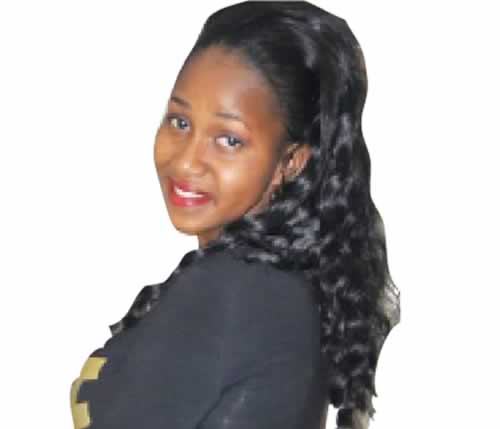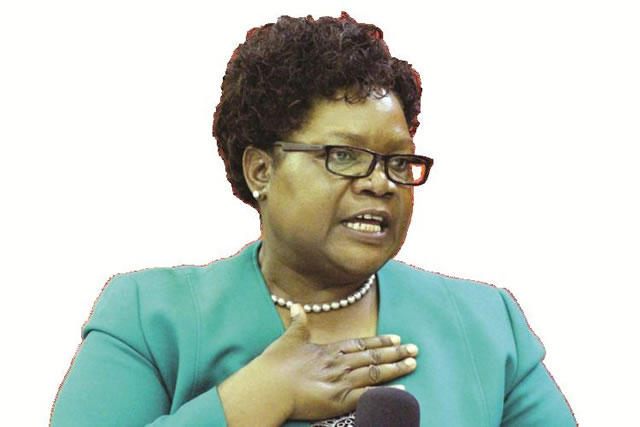After all black is beautiful

Vaidah Mashangwa
It must be borne in mind that all this emanates from white racism and supremacy. The African woman was colonised in such a way that the white man uses self-esteem as a conquering tool by controlling image making industries. The various forms of media are used to project what is culturally acceptable, what is construed as beautiful and what makes a woman attractive. Through the print and electronic media, women have been reminded about how to project their sexuality, what they ought to do to enhance it and how to unite sexuality with what is termed beautiful
AS I watched the Oprah Winfrey Show, I was astounded when the interviewee Michael Jackson’s mother reiterated that the main reason why Michael Jackson underwent plastic surgery was that he felt he was ugly and hence needed to change his facial features.
I listened with astonishment when the mother pointed that even when he was growing up he would confine himself indoors afraid to play with other children because he considered himself ugly.
Who could ever think that some Africans were also made to feel ashamed of having dark skin and that they would crave for having light skin. Women should actually lead the race and stop wishing for worldly images and to love and accept themselves as they are and to honour their beauty, wrote the Southern African Feminist Review.
The main reason is that some women still suffer from their bitter fruits of white supremacy as they continue to ail from a condition that has made them run away from themselves and leap towards a white beauty that will forever remain out of reach.
In the book Gender, Politics and Democracy, it is highlighted that after long stares in the looking glass African women have found that they fall away of society’s selection of the ultimate beauty queen, the white woman. Their reflection in the mirror is full of critique not confidence, pity not pride and it erupts into an onslaught of dissatisfaction. In the end the perception by most women is that they are not light enough, never slim enough and their hairstyles rarely straight enough and their eyes not hazel enough.
Such beauty perceptions have created lifelong periods of suffering and pain for many African women as they wonder why their noses are not pointed enough and why they are too big and fat. While some have celebrated their personal uniqueness others have become entrapped in the relentless cycle of self-hate and physical inferiority just like what Michael Jackson did.
It must be borne in mind that all this emanates from white racism and supremacy. The African woman was colonised in such a way that the white man uses self-esteem as a conquering tool by controlling image making industries. The various forms of media are used to project what is culturally acceptable, what is construed as beautiful and what makes a woman attractive. Through the print and electronic media, women have been reminded about how to project their sexuality, what they ought to do to enhance it and how to unite sexuality with what is termed beautiful.
It has been observed that African women have become major consumers in the cosmetic market and this has succeeded because the manufacturers of various cosmetics have taken advantage of the poor self-image that the African woman has to exploit them. Women have been socialised and made to believe that they have to be Eurocentric as much as possible.
During the national launch of International Rural Women’s Day hosted by the Ministry of Women Affairs, Gender and Community Development, I was mesmerised by the deep still embedded in the Shangani culture. The women were all black and beautiful as they marched and danced wearing their traditional outfits which comprised waist and neck beads and traditional cloths wrapped across their shoulders like the Swazi women. The point is that African women are beautiful and trying to physically change complexion is a contradiction to the norm.
Those who grew up in the rural areas may recall how fascinating it is to see women in their native dresses, colourful and abundant jewellery, body decorations and intricate natural hairstyles like the Binga women for example. The Binga women still maintain kinky hair, and their lifestyles. Westernisation has actually created two different beauty standards for the African urban and rural woman. The rural woman with incisions on the face and plaited hair and the urban woman with different features all together.
In the rural areas even the perception of a beautiful woman is different, for example, a fat woman is beautiful and it is a sign that the woman is well looked after by her husband. Rural women are less concerned with obsessive body maintenance that has come to characterise urban women.
In urban areas a woman’s self-worth, self-esteem and sexuality is expressed in different ways including make up and how it is also applied. Since this is a gender column, a few men are interviewed as regards a beautiful woman and different opinions; some postulated that lighter women are more attractive whilst others expressed sorrow at the damage that women have inflicted on their faces in the name of beauty. I suppose beauty is in the eye of the beholder.
Even after the ban by the Zimbabwe government on skin lightening creams, Zimbabwean women continue to smuggle and apply the creams and what some women do not realise is that these lightening agents have a dangerous chemical content which facilitates epidermal destruction after a long term use. Some women have actually developed sores on their faces after using these skin lightening cosmetics, others become so obsessed with their use that in inner veins on the face become visible and some simply assume a deep black complexion once they stop using the creams over a long period. It is against this background that women should appreciate that it is beautiful to remain natural.
Research has it that even the girl child’s performance at school is affected by trying to look beautiful and better than other girls. At upper levels during secondary education boys tend to do better because some girls concentrate too much on their looks. With the freedom conferred to our school children in terms of hairstyles, makeup, dress code and family blues the competition gets tougher and tougher, to the extent that some have to go out with “sugar daddies” just to buy that makeup kit and have a new hairdo. Anyway women’s rights are human rights and I suppose we all have rights.
Advertisement on television and the print media have to a large extent played a role in the shaping of views that women have on beauty; Magacues for example portray a woman who is light with curly hair and makeup as beautiful over the dark woman without makeup, other advertisements warn women against obesity and encourage them to be trimmed. The Southern African Feminist Review points out that such advertisement confuse the issue of weight. Rather than advocating for healthy bodies and underlining the health risks of sedentary lifestyle, they glamourise thinness for its sex appeal and supposed beauty enhancement. After all men interviewed suggested that not all slim women are attractive, I suppose beauty is in the eye of the beholder.
The encroaching Eurocentric beauty standard in Africa emphasises and favours the angled thin bodies and rejects roundness, protruding hips valued in many traditional African communities. The book Gender, Politics and Democracy cites examples of Oprah Winfrey and Winnie Mandela who are big but still look beautiful.
In Zimbabwe the Miss Matofotofo still represents women who are big but still look beautiful. Women ought to accept that we come in all shapes and sizes and that we are still beautiful in our own way. It is unfortunate that the media has depicted a fat woman as an asexual, miserable and unattractive. This is the main reason too why models should be slim and have small waistlines.
The cosmetic industry however has managed to profiteer from the economic influence on culture and have taken advantage of the difference between tradition and modernism. The worst scenario in terms of images that women create for themselves about their sexuality is through advertisements. Some women have gone to the extent of using their body parts that are deemed sexy by men to appear on various advertisements. Instead of women being encouraged to develop and exercise their intellect they get entangled and used as sex objects. Some women nowadays dress in such ways that attract stares from everyone thereby rendering themselves vulnerable to sexual abuse.
Tasneen Ansariyah-Cirde wrote in her article Urbanisation and Beauty Myth that it is therefore imperative for African women to develop and circulate affirming images of themselves and to construct an Afrocentric feminist aesthetic of beauty. African beauty should be all encompassing and should not degrade the African culture and heritage. It is also important to redefine black beauty so that people understand that it is not only appreciated when it is associated with light skinned women. After all women’s beauty is not solely based on physical appearances but that the mind, spirit and body should be viewed as entities that help make the whole. In fact all these factors are central in aesthetic assessments of individuals. Such concepts will assist to transform the perceptions, self-esteem and self-concepts of the next generations of African women and men.
The writer is Vaidah Mashangwa, Provincial Development Officer in the Ministry of Women Affairs, Gender and Community Development. She can be contacted on 0772111592 and email: [email protected].











Comments